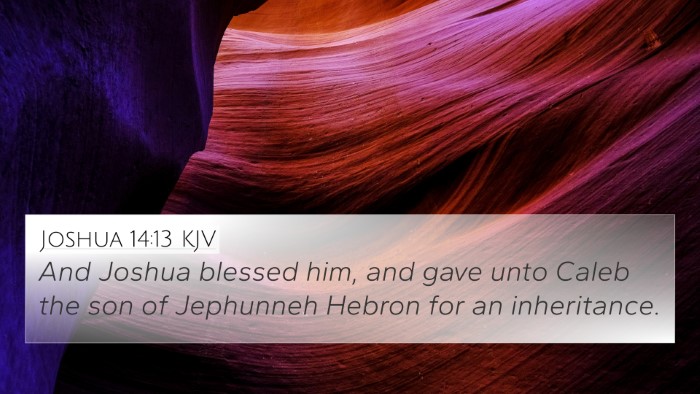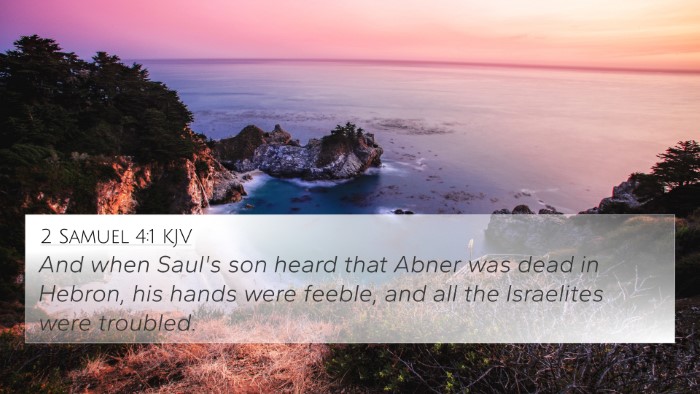Meaning and Interpretation of 1 Samuel 30:31
The verse 1 Samuel 30:31 states: "And to those who were in Hebron; and to all the places where David himself and his men were wont to haunt." This verse is a part of a larger narrative that showcases David's journey as a leader and the connections he built with various groups, including those providing refuge and support during his adversities.
Overview of 1 Samuel 30:31
In analyzing this verse, we can draw insights from respected public domain commentaries such as those by Matthew Henry, Albert Barnes, and Adam Clarke. Each provides valuable context and understanding of this scriptural passage.
Matthew Henry's Commentary Insights
Henry emphasizes the importance of community and recognition in the life of David. He highlights David's encouragement among those he led, suggesting that during times of hardship, building relationships is essential. David’s decision to share provisions and discourse with various locations signifies how leadership is not just about authority but also about building alliances and sustaining morale.
Albert Barnes’ Commentary Insights
Barnes notes the geographical significance of Hebron and its relevance as a connecting point for David. He interprets this movement as a strategic decision made by David, who understood the importance of establishing his presence in areas familiar with his leadership. It shows a theme of consistency and vigilance in David's leadership during tumultuous times.
Adam Clarke's Commentary Insights
Clarke elaborates on the relationships that David formed through his journeys. He notes that these connections demonstrate the broader theme of God's providence and presence in the lives of those who trust and rely on Him. David’s recognition of the various places he visited reflects upon a life led by purpose, guided by spiritual foundations.
Connecting Themes in 1 Samuel 30:31
This verse can be understood through several thematic Bible verse connections and parallels, which can enrich our understanding of David's narrative and leadership model:
- Leadership and Community: The importance of building and maintaining relationships within a community for effective leadership (1 Chronicles 12:1-22).
- Divine Guidance: The support and guidance David received from God in uncertain times (Psalm 23:1-3).
- Restoration and Rescue: David's role in the redemption of his people, reminiscent of Christ's work (Matthew 9:12-13).
- Faith and Providence: The connection between faith in God and His provision even in distress (Philippians 4:19).
- Strategic Leadership: David’s wisdom and foresight in selecting allies reflect principles effective in leadership (Proverbs 11:14).
- Shared Blessing: The theme of sharing God’s blessings and resources as David did in 1 Samuel 30:26-31.
- Hope and Encouragement: The encouragement David provided to his followers represents a model of hope (Isaiah 40:31).
- Legacy of Faith: David’s actions left an enduring legacy of faithfulness (Acts 13:22).
Bible Cross-References
Below are key Bible verses that relate to 1 Samuel 30:31, showcasing connections between biblical texts:
- 1 Chronicles 12:1-22 - Highlights David's alliances.
- Psalms 23:1-3 - Emphasizes God’s guidance.
- Matthew 9:12-13 - Illustrates the redemptive role of Christ.
- Philippians 4:19 - God’s provision in times of need.
- Proverbs 11:14 - Importance of a multitude of counselors.
- Isaiah 40:31 - Promise of renewed strength for those who wait on the Lord.
- Acts 13:22 - Acknowledgment of David as a man after God's own heart.
Conclusion
Understanding 1 Samuel 30:31 requires recognizing its place within the broader narrative of David’s life. It teaches invaluable lessons on leadership, community, divine guidance, and the importance of establishing healthy relationships. By using the tools for Bible cross-referencing and examining related verses, one can gain deeper insights into the biblical text’s interconnectedness. This approach enriches one's study of scripture and demonstrates the intricate dialogues present within the Bible.
Additional Resources for Cross-Referencing
- Explore a Bible concordance for indexing relevant scripture.
- Consult a cross-reference guide for specific themes.
- Utilize cross-reference systems for an organized study.
- Implement Bible chain references for thematic studies.
- Employ comprehensive Bible cross-reference materials for deeper exploration.







